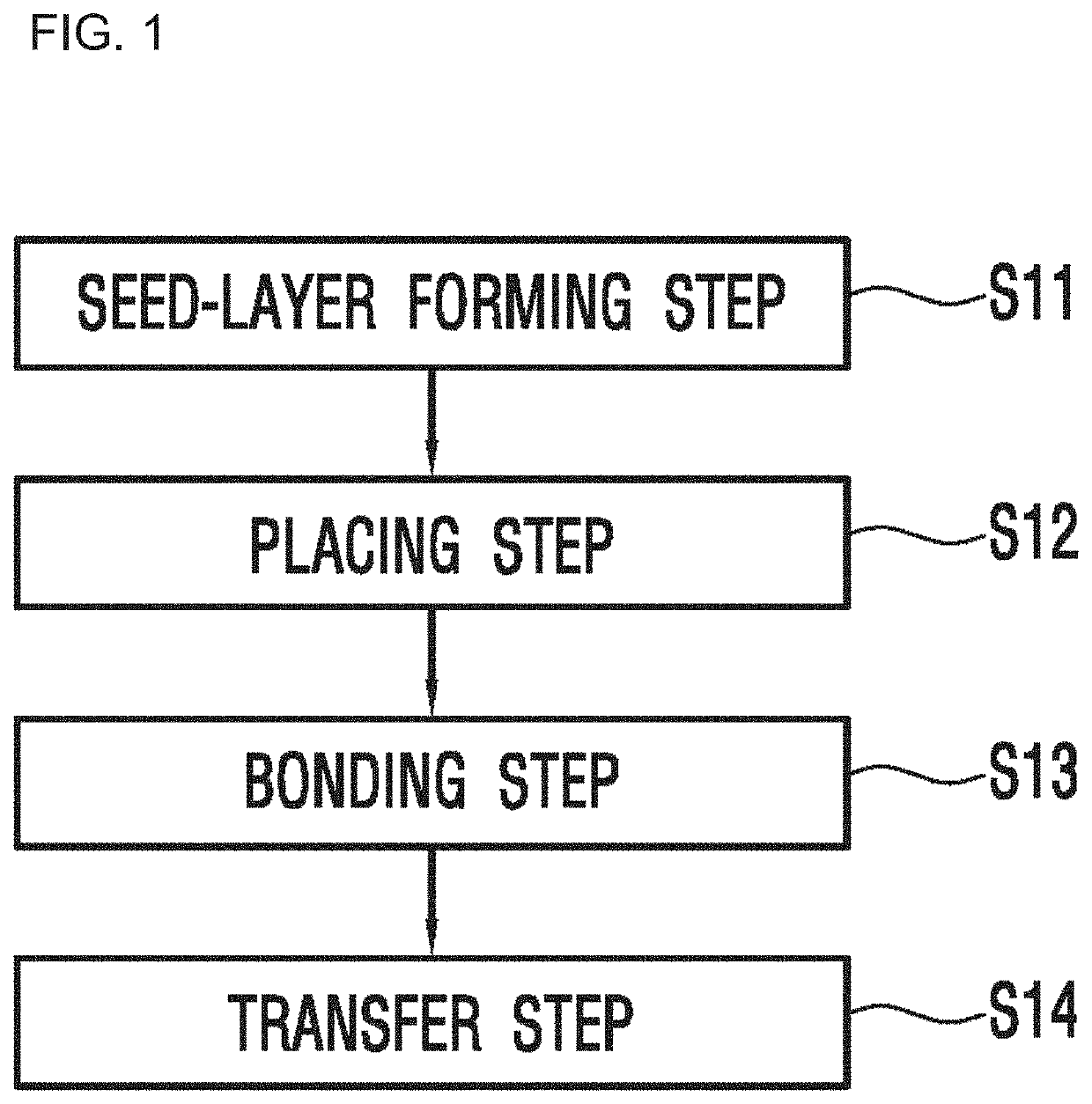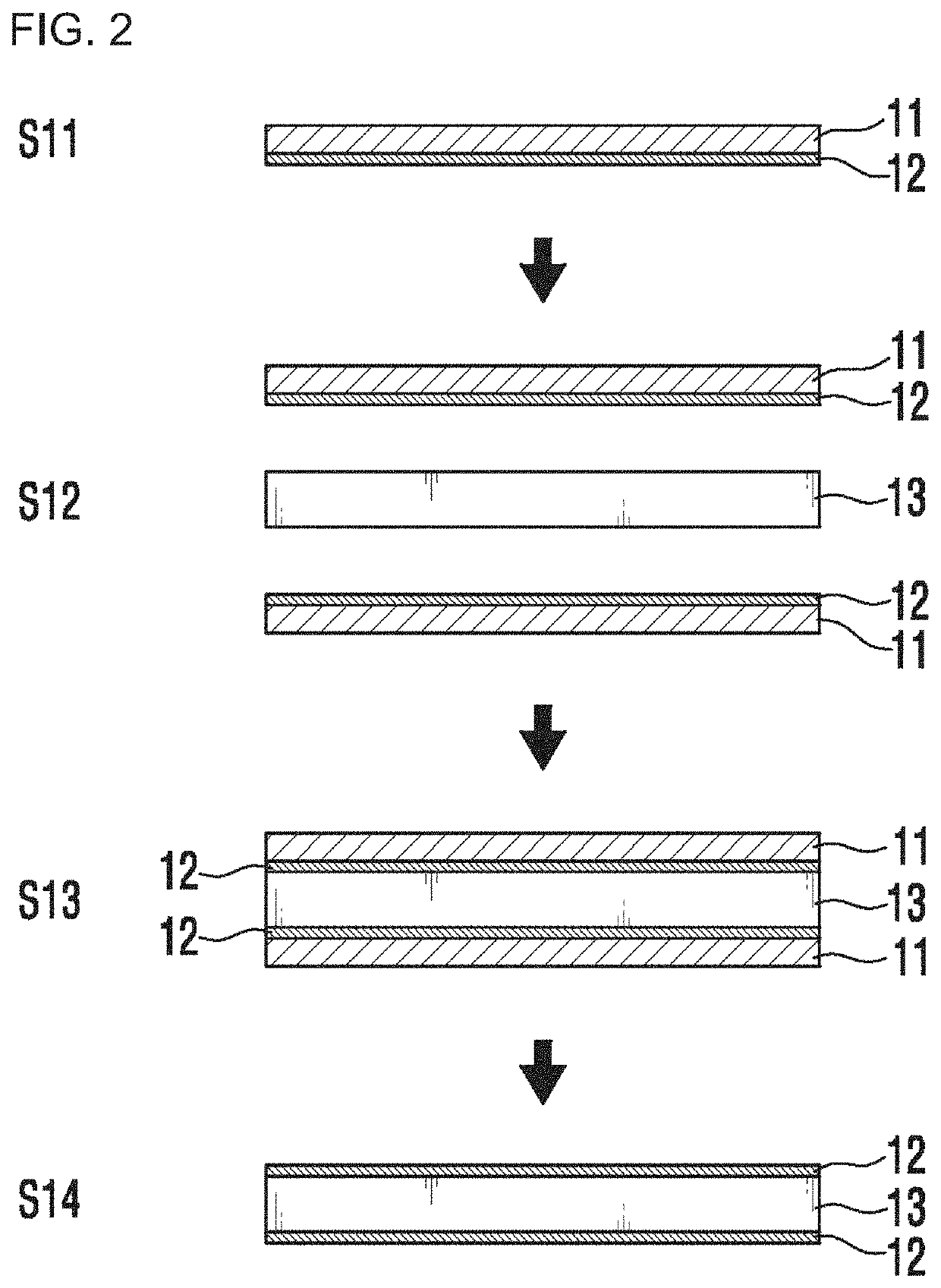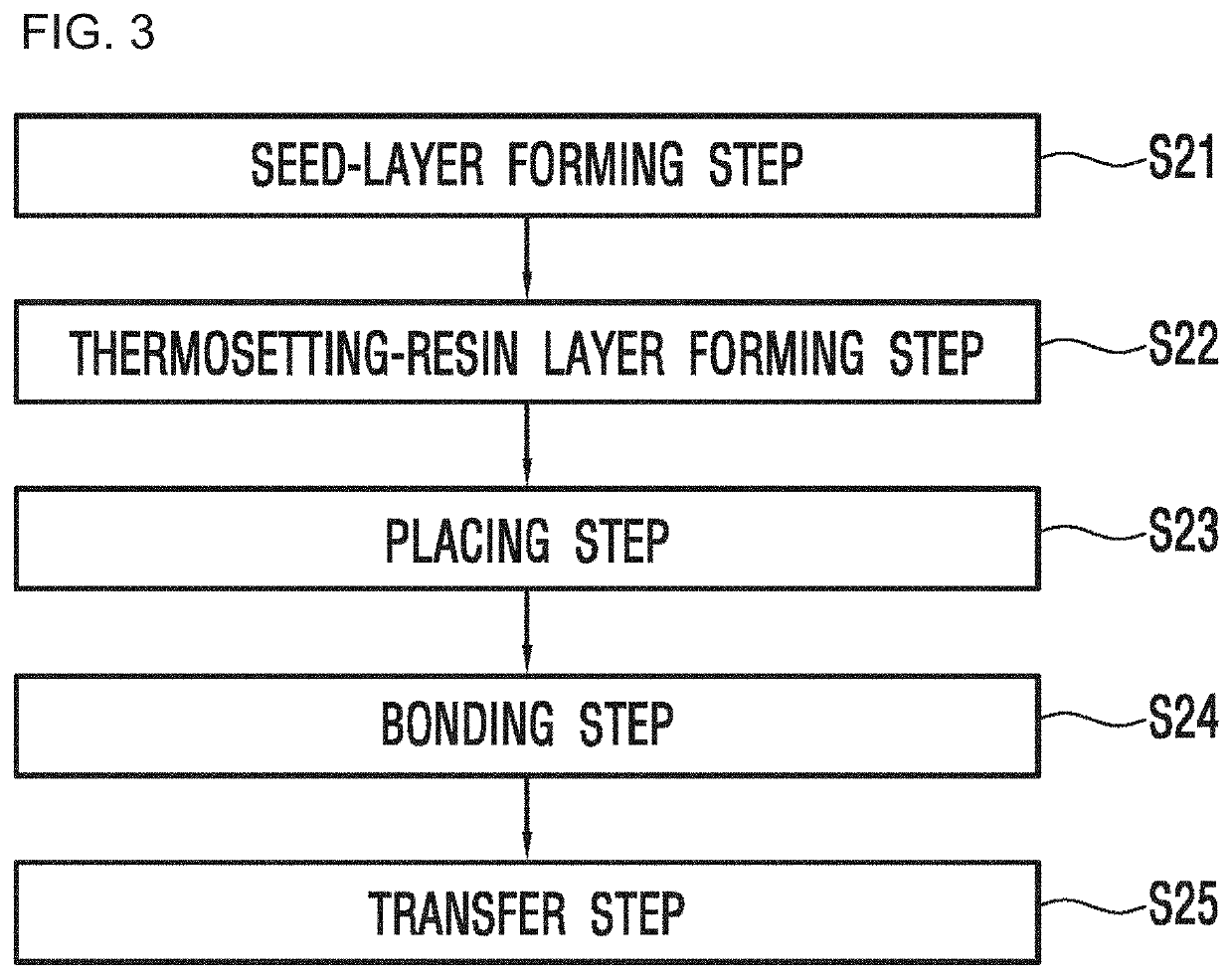Method for manufacturing transfer film including seed layer, method for manufacturing circuit board by selectively etching seed layer, and etching solution composite
a technology of transfer film and selective etching, which is applied in the direction of liquid/solution decomposition chemical coating, printed element electric connection formation, plastic/resin/waxes insulators, etc. it can solve the problems of increasing costs, difficult to finely form an inner layer circuit, and increasing the weight of electronic products. , to achieve the effect of preventing the surface smoothness of the seed layer from being lowered, low surface smoothness, and high smoothness
- Summary
- Abstract
- Description
- Claims
- Application Information
AI Technical Summary
Benefits of technology
Problems solved by technology
Method used
Image
Examples
embodiment 1
of Selective Etching Solution Composition
[0157]1-1: Preparation of Selective Etching Solution Composition 1
[0158]Hydrogen peroxide 12 wt %, monoethanolamine 40 wt %, wetting agent 1 wt %, antifoaming agent 1 wt %, and deionized (DI) water wt % were mixed to prepare a selective etching solution composition 1.
[0159]1-2: Preparation of Selective Etching Solution Composition 2
[0160]Sodium percarbonate 7 wt %, N-methyldiethnaolamine 32.5 wt %, wetting agent 0.5 wt %, antifoaming agent 1 wt %, and DI water 59 wt % were mixed to prepare a selective etching solution composition 2.
[0161]1-3: Preparation of Selective Etching Solution Composition 3
[0162]Sodium percarbonate 4 wt %, N-methyldiethnaolamine 60 wt %, wetting agent 1.5 wt %, antifoaming agent 0.5 wt %, and DI water wt % were mixed to prepare a selective etching solution composition 3.
embodiment 2
of Comparative Examples
[0163]2-1: Preparation of Comparative Example 1
[0164]For comparison with the selective etching solution compositions 1 to 3 prepared in the embodiment 1, with reference to the embodiment 1 disclosed in Korean Patent Publication No. 10-2016-0115189, iron (III) 10 wt %, nitric acid 5 wt %, acetic acid 5 wt %, EDTA 1 wt %, glycolic acid 1 wt %, and DI water 78 wt % were mixed to prepare a comparative example 1.
[0165]2-2: Preparation of Comparative Example 2
[0166]For comparison with the selective etching solution compositions 1 to 3 prepared in the embodiment 1, with reference to the embodiment 1 disclosed in Korean Patent Publication No. 10-2010-0098409, ammonia 7 wt %, hydrogen peroxide 1.5 wt %, and DI water 91.5 wt % were mixed to prepare a comparative example 2.
[0167]2-3: Preparation of Comparative Example 3
[0168]For comparison with the selective etching solution compositions 1 to 3 prepared in the embodiment 1, with reference to the comparative embodiment 2 ...
embodiment 3
Results
[0169]Under test conditions such as a substrate material of polyimide (PI), a specimen size of 2.5×2.5 cm (Ag coating seed layer, Cu-flexible copper clad laminate (FCCL)), an etching solution of 40 g, an etching time of 10 seconds, and an inductively coupled plasma (ICP) analysis of regarding less than 5 ppm as not detected (N.D), the selective etching solution composition prepared in the embodiment 1 and the comparative example prepared in the embodiment 2 were subjected to an etching test (see FIG. 13).
[0170]As a result, with the selective etching solution compositions 1 to 3 and for the etching time of 10 seconds, silver was etched to expose the surface of the PI substrate material. However, the surface of the Cu FCCL did not have any specific discoloration or anything significant, and therefore it was appreciated that the etching solution made no surface oxidation.
[0171]On the other hand, with the comparative examples 1 and 2 and for the same period of time, silver was no...
PUM
| Property | Measurement | Unit |
|---|---|---|
| wt % | aaaaa | aaaaa |
| thickness | aaaaa | aaaaa |
| current | aaaaa | aaaaa |
Abstract
Description
Claims
Application Information
 Login to View More
Login to View More - R&D
- Intellectual Property
- Life Sciences
- Materials
- Tech Scout
- Unparalleled Data Quality
- Higher Quality Content
- 60% Fewer Hallucinations
Browse by: Latest US Patents, China's latest patents, Technical Efficacy Thesaurus, Application Domain, Technology Topic, Popular Technical Reports.
© 2025 PatSnap. All rights reserved.Legal|Privacy policy|Modern Slavery Act Transparency Statement|Sitemap|About US| Contact US: help@patsnap.com



